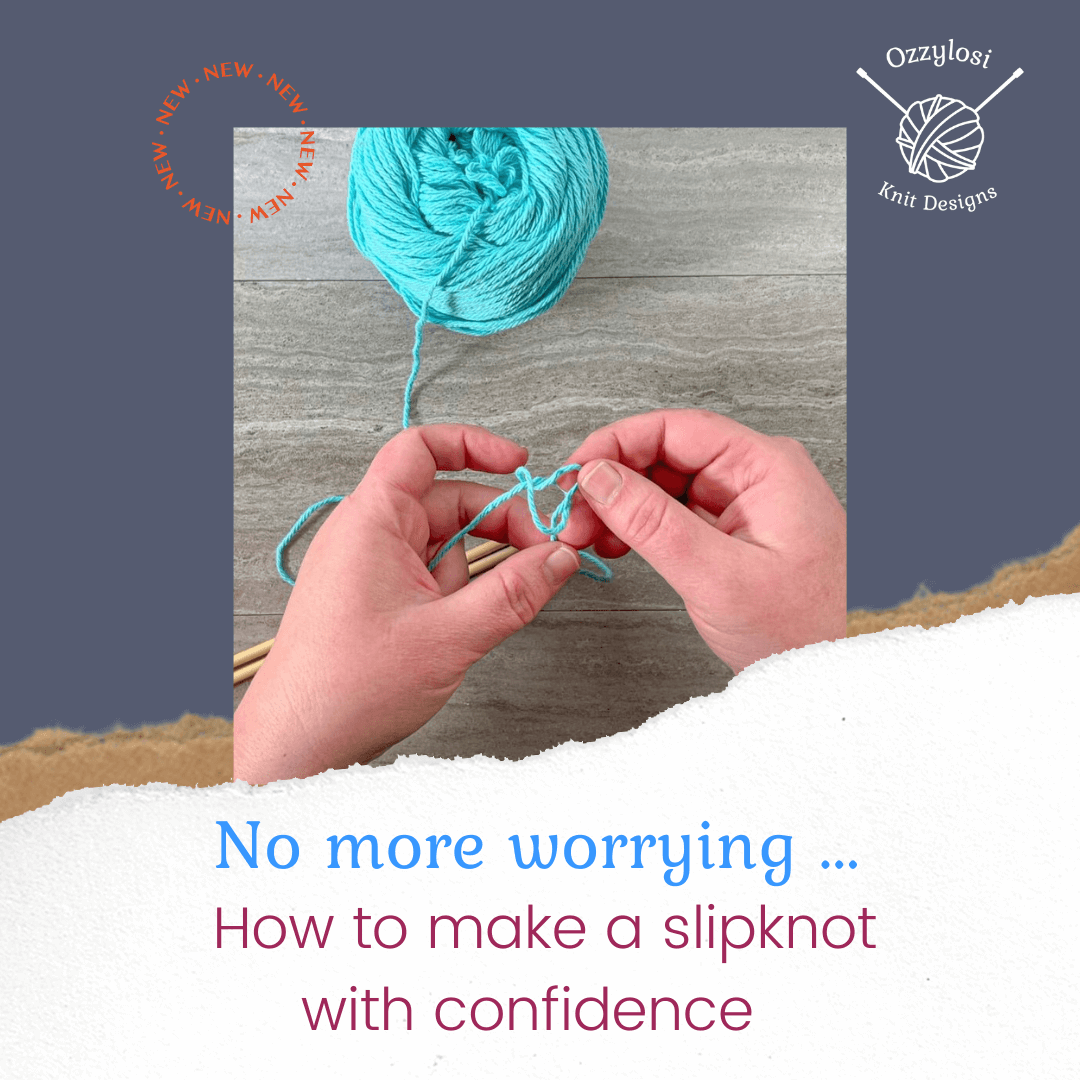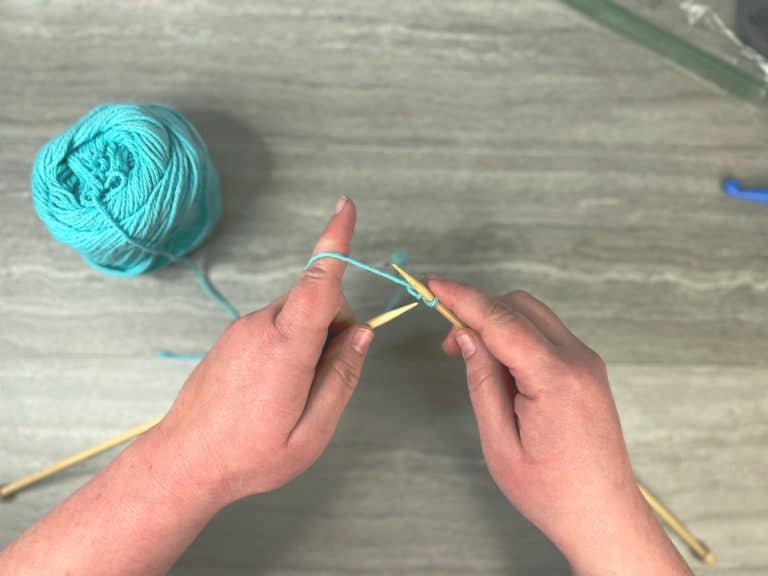No more worrying… How to make a slipknot with confidence
You know what is incredible? How many times a knitter says to me “Thank you for giving me all that detail, I never knew if I was making my slipknot correctly”.
I teach people to knit. Sometimes they already know how to knit, but they’ve stumbled upon me and we spend some time working on skill building together.
Recently in a Beginner Knitter Finger Flex Challenge, we were making slipknots. And I had an experienced knitter say they never knew which side of the needle the tail end should be as opposed to the working yarn. Friends, no more wondering. Let’s get into all the details.
Gather your tools & materials
This is going to be a photo tutorial, so if you’d like to walk along with me you’re going to need some things ready to go.
- Yarn
- Knitting Needles
Measuring your yarn
Most knitting things that I’ve seen recommend that you should measure out about *5 inches (or 12.75 cm) of yarn for a tail. But I know that when you’re new to knitting you can be afraid of “wasting yarn” and you cal feel like if you make too long of a tail you will run out.
Not going to lie, that could happen. But the tail end is not going to make or break your knit project. And in fact, I’d be worried that I didn’t have enough tail end to weave in so that my knitting unravels. And to me, that’s more frightening.
So, I say measure about 8-12 inches (or 20.25-30.5 cm) of yarn. This provides you with a nice long length of yarn to weave in. I recommend this length for the following reasons:
- The ends of your yarn tend to fray after being woven in and out of your knit item.
- A tapestry needle can be a good 2″ in length on its own.
- Reduces frustration in weaving in ends if you don’t have to fight the yarn, knit item and tapestry needle.
*Unless you are doing a long-tail cast-on method.
Should you use your fingers or your knitting needle?
This truly is a preference. Beginners should start by making the slipknot with their fingers. As this will help them become comfortable handling yarn. And their fingers will become used to the strength they can apply to yarn and knitting projects.
If you’ve been knitting for a while and you’d like to get things started on your needles right away, go for it! I’ll do another blog post tutorial for that skill in the future.
As long as you make a slipknot, it’s going to be ok.
How to make a slipknot (with fingers)
For beginners, I recommend that we use this opportunity to learn a few knitting terms while making a slipknot. Learning terms is going to help you on your knitting journey. I also think it’s best to learn them in little bits as we move forward rather than getting overwhelmed.
Step 1 measure 8-12 inches of yarn
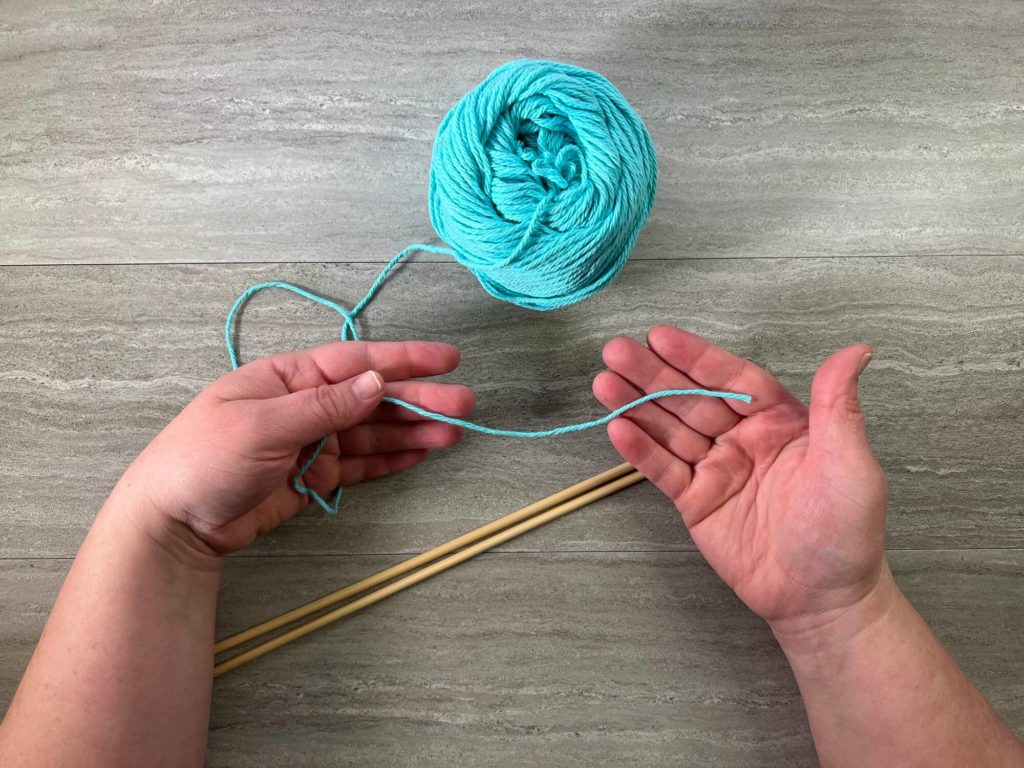
The portion of yarn where you will make your slipknot is going to be the dividing point for the words we will now use to describe the yarn.
Tail-end: This is the yarn from the slipknot (or dividing point since we haven’t made it yet) to the end of the yarn. This is the 8-12 inches that you must measured out.
Working Yarn: This is the yarn that is from the slipknot (or dividing point) to the ball of yarn.
The tail-end yarn should be nearest to you, while the working yarn should be moving away from you.
Step 2 make a pre-slipknot loop
You will want to take your tail-end and cross it over the working yarn creating a pre-slipknot loop.
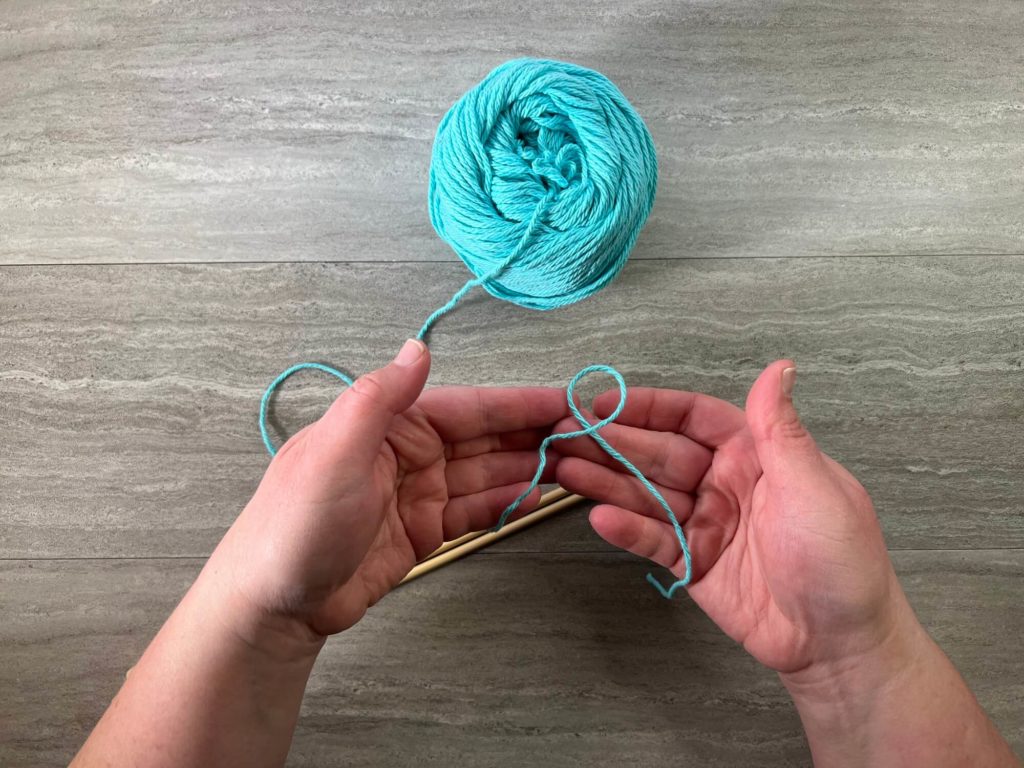
Step 3 make the slipknot
While holding the pre-slipknot loop in place with one hand, place your fingers above and below where the tail-end and working yarn cross. Take your other hand and move the tail-end yarn under neath the pre-slipknot loop. Create an additional small loop with your tail-end yarn at the point that is closest to the pre-slipknot loop you are holding with your other hand. Push this loop through the pre-slipknot loop.
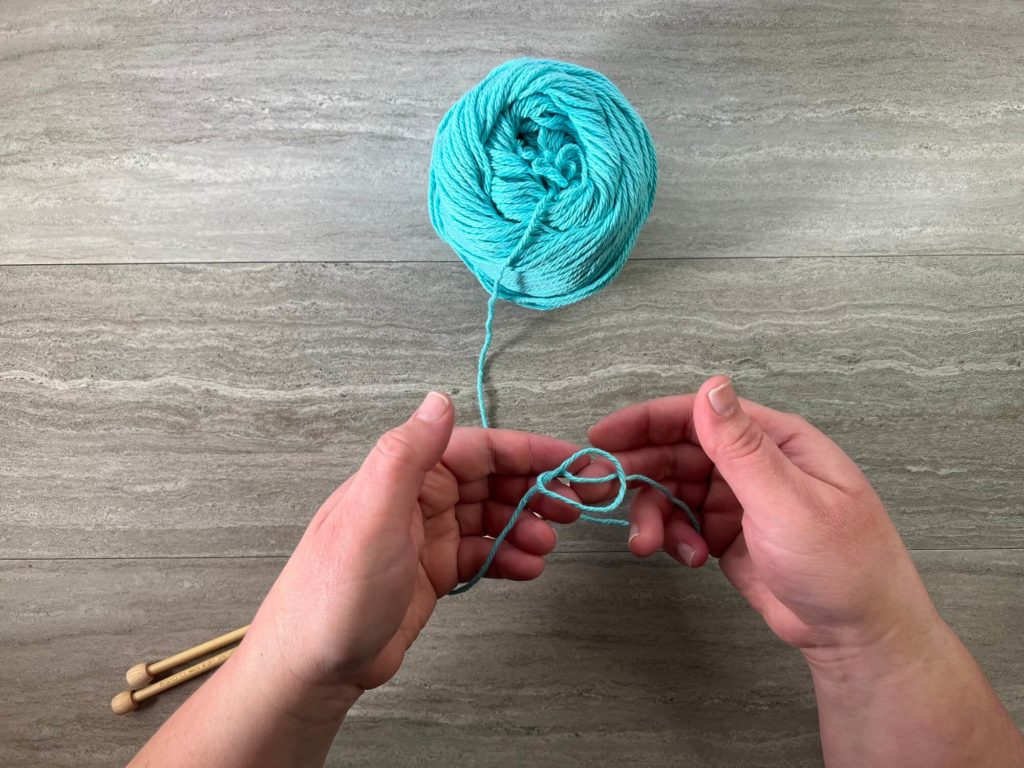
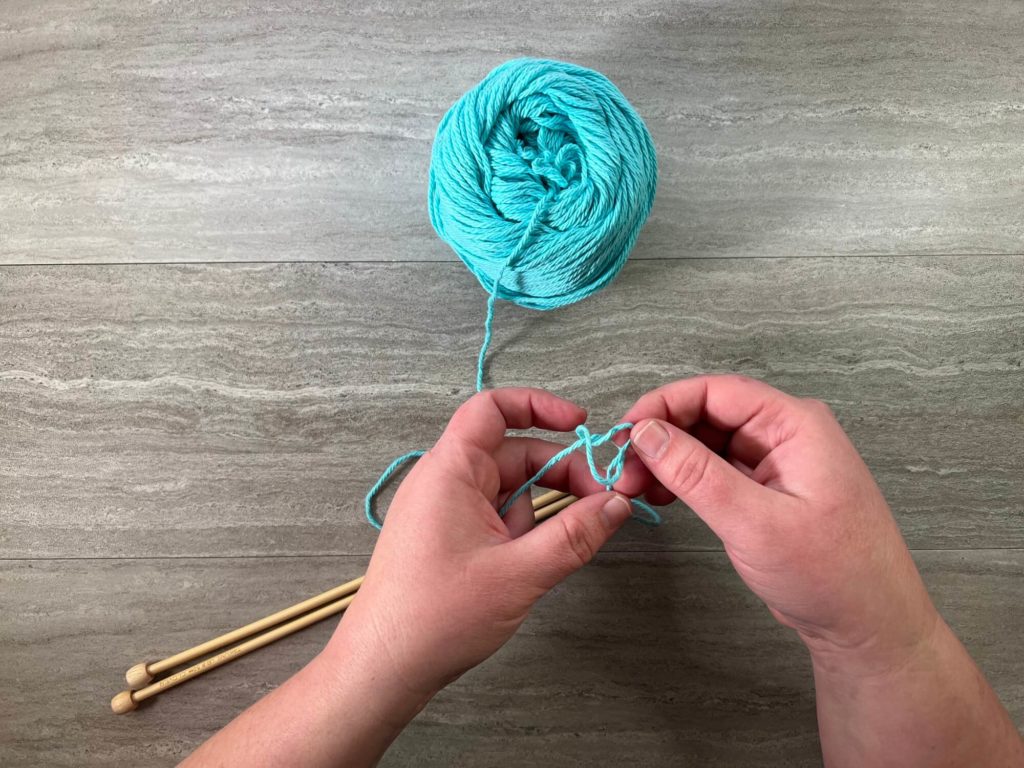
Step 4 tighten things up
Grab ahold of the loop you have just pulled through your pre-slipknot loop. Tug on both the tail end and working yarn until the pre-slipknot loop becomes a slipknot.
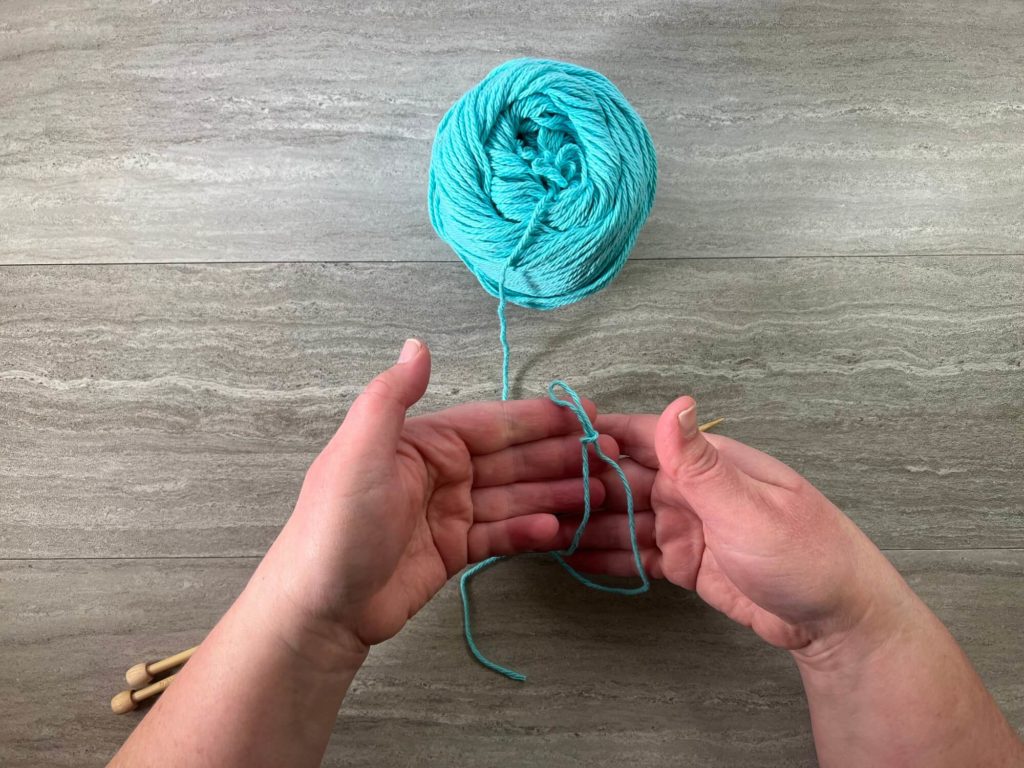
Step 5 place on needle and size to fit
The beauty of a slipknot is that it slips which means that you can size your slipknot according to your needs. Now let’s talk about how to do that.
What if it’s too big
Not to worry, and actually this is the easiest to fix. You simply place it on your knitting needle and pull on the both the working yarn and tail-end until it is snug on your knitting needle. Make sure it is not too tight by gently sliding the slipknot up and down your needle. If it was too tight, as soon as you began gliding it against the needle you should have felt the slipknot relax.
What if it’s too small
Again, no need to worry. In this case you will want to pull on the actual loop of the slipknot, which will move the tail-end yarn. Once you get it large enough, place it on your knitting needle and adjust the size of your slipknot.
Wait, what about confidence?
Well, that’s all in the practice you do next. Practice makes progress and if you keep working on your slipknot, you will gain confidence with not only your slipknot ability, but also in your ability to handle yarn.
This is also a fabulous opportunity to work on your knitting terms. You can practice the steps by saying the appropriate terms aloud.
Happy Knitting!
Lois
Looking for similar content?
Learn how to measure and cast-on using the Long Tail Cast-on method. Tutorial here.
Pick up my FREE Beginner Knitter Checklists
Join the Beginner Knitter Finger Flex Challenge! Join the waitlist now and you’ll be notified when the next one begins.
Or grab a copy of the Learn to Knit Resource Kit

